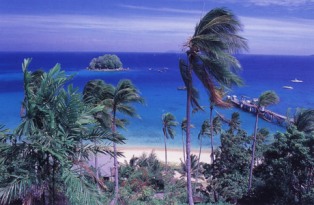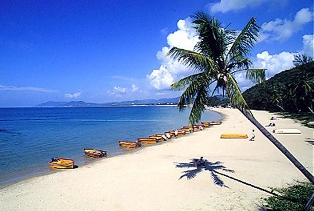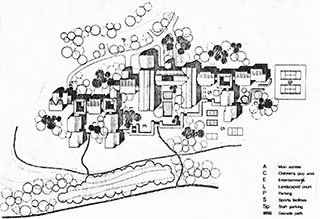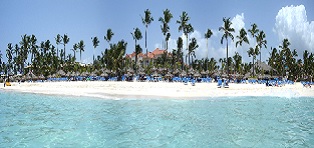|
_____________
Strategic Development
Planning
Urban Design
Architecture
Landscape
Tourism
_____________
|
|
Feasibility Studies
The firm deals with recommendation on types of institutional mechanism for implementation and feasibility studies.
Tourism projects will often necessitate a feasibility study involving the assessment of costs and financial return with regard for major resort development projects.
|
Tioman Tourism and Master Plan Study, Malaysia
Client: Lembaga Kemajuan Negeri Pahang and
Pahang State Development Corporation. |

|
|
Shankland Cox was commissioned to
undertake social, economic, tourism
and hotel feasibility studies to prepare
a master plan for the island of Tioman.
The environment on the island is
especially attractive with high wooded
hills, small villages and an undisturbed
tranquil atmosphere. Based on the
market analysis an assessment of the
financial viability of alternative hotel
development concepts was undertaken
including extensions to the existing
hotel and/or development of new
facilities. Sensitivity tests were carried
out to establish the impact on viability
of changes in major parameters such
as interest rates, occupancy levels,
visitor expenditure patterns, equity
participation, and financing methods.
|
Hainan Province Tourism Development Master Plan, Hainan, China
Client: Hainan Provincial Tourism Administration PRC / World Tourism Organisation
|

|
|
Shankland Cox was commissioned by WTO and the Hainan Provincial Tourism Administration to prepare a strategy for tourism development in the province and identify projects for its implementation. Hainan island has a land area of 34000 sq kms and occupies a third of the total marine territory of China. It is the only tropical island in the whole of China. Hainan possesses fine beaches which compete with many destinations in south east Asia and include also hot springs, rainforests, mountain resorts and cultural attractions of value for a tourism destination.
The Study was presented in three volumes consisting of Market Development, trends and requirements, Provincial Structure Plan, supporting Development Strategies and assessment of impacts, detailed planning recommendations and a detailed Development Programme of Priority Actions. A total of 82,000 rooms was targeted by 2020 with one third of the supply for high quality accommodation. Shankland Cox was commissioned as part of the Master Plan to prepare design for a resort at Xiodong Bay located on the south part of the island and in close proximity to Sanya Beach a key tourism destination in Hainan.
|
Tanjung Penggerang, Johore, Malaysia
Client: Government of Malaysia and Johore Tenggara Development Authority
|

|
|
Following the completion of the Southeast
Johore Master Plan, Shankland Cox
undertook a study with the assistance
of the University of Malaya to identify a
suitable area for a pilot tourism project.
The area of research was confined to
the south East coast of Johore in the
Pengerrang region where there were
many attractive beaches.
Market studies revealed that the greatest
potential for tourism lay in trying to attract
international visitors in South East Asia to
a pleasant, quiet resort. The site selected
at Tanjung Penggerang has an extensive
golden sandy beach, a beautiful unspoilt
natural environment and a tropical
climate tempered by cool sea breezes.
The study included an analysis of the
potential market, a financial analysis
and an economic feasibility study
which showed a satisfactory rate of
return on the proposed development.
Subsequently the resort was developed
following the proposal and two hotels
with associated day facilities are today
in operation.
|
Puerto Plata Tourism Development Study, Dominican Republic
Client: International Bank for Reconstruction and Development (IBRD) as
Participating and Executing Agency of the United Nations Development Programme (UNDP)
|

|
|
Shankland Cox carried out an investment feasibility study for tourism development in the Puerto Plata area on the north coast of the island. The study included a market analysis in order to identify the probable quantities and types of tourist likely to visit the Dominican Republic. It was concluded that the country was well suited to compete in the mass tourism market through the provision of carefully constructed and costed holiday packages. Accommodation included in the proposals amounted to 12,000 beds by 1990, 70 per cent of which would be in hotels and 30 per cent in self catering accommodation such as apartment and villas. The investment programme would generate total employment ranging between some 11,000 and 14,700 by 1990. The study included the preparation of structure plans for all the development, project plans for priority development, proposals in respect of realization, and a study of the financial implications and economic feasibility of the project. Capital costs, tourist spending, hotel occupancies and revenues were calculated and the net internal income to the economy over a 25 year operating life of the project was assessed. The foreign exchange component was determined and the net foreign earnings estimated. The results of the economic feasibility studies indicated that the tourism development proposed would show an attractive rate of return.
|
|





